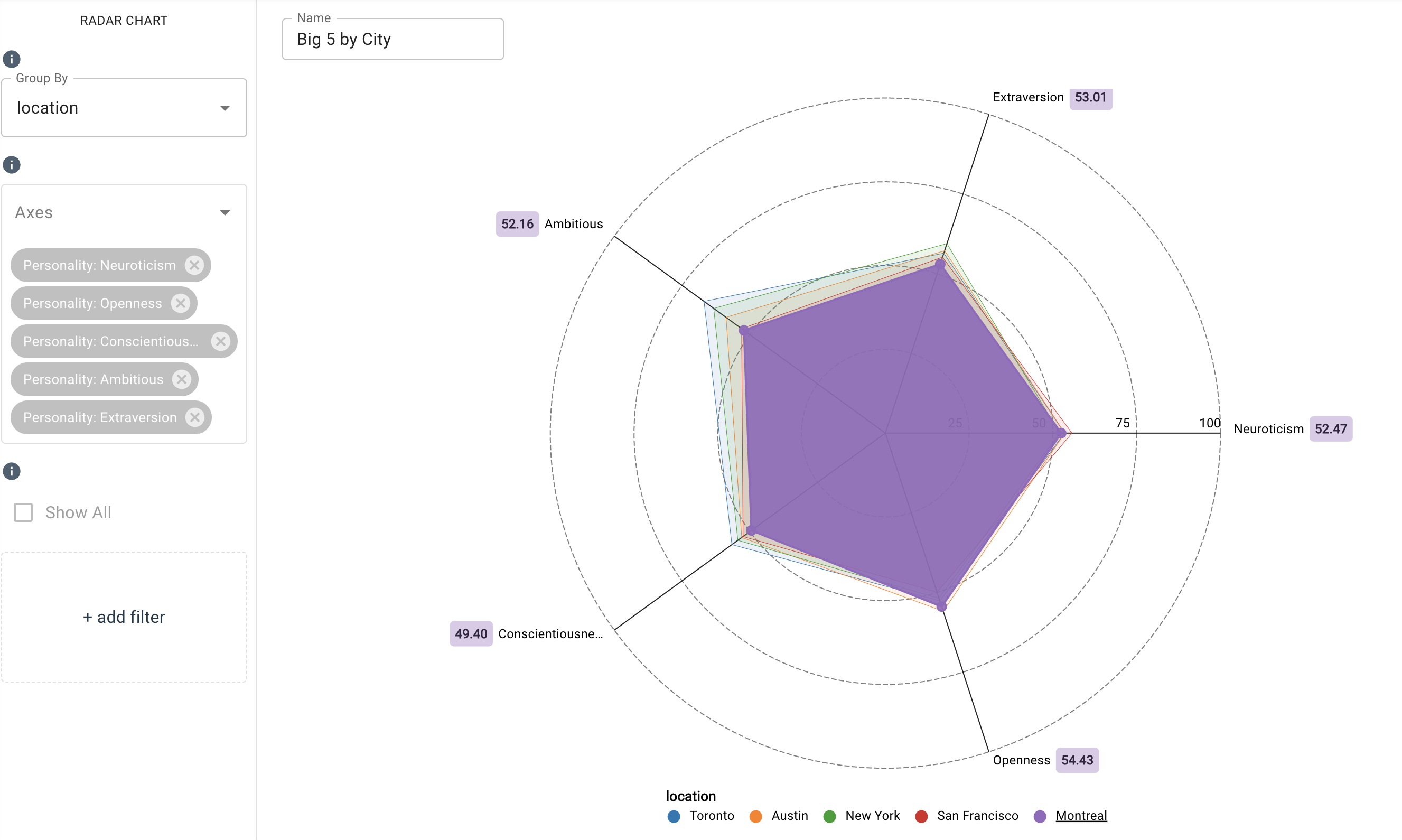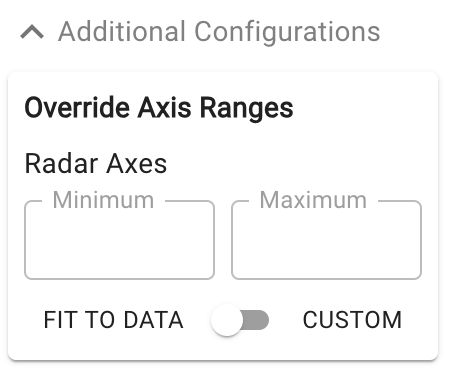Radar Chart
This chart compares three or more normed measures from multiple categories and displays them on radially arranged axes. It works well with categorical variables such as speaker, gender, office location, age, and tenure, among others. It also works well with datasets that represent a group — for example, in creating a profile for an executive team by grouping by overall dataset from a transcript using Big 5 and/or DISC Personality profiling.
Radar charts only allow normed scores, so datasets with 350+ word samples for categorical variables/overall are the minimum requirement.

Parameters
-
The Group By drop-down menu allows you to set the column to use to group the chart’s data by selecting either the overall dataset or by a category such as
speaker_name,city, or any category your dataset is labeled with. Note that you can type in this field to search and select an existing category. -
The Axes drop-down menu allows you to select three or more measures from the available frameworks so you can plot the different frameworks radially on their axes. The closer the point is to the outside of the radius, the higher the score and vice-versa. You can type in this field to search and select an existing measure.
-
Under
Additional Configurations, you will findOverride Axis Ranges. This tool allows you to toggle between Fit to Data and Custom. By choosing Fit to Data (the default setting), the chart will scale to the upper ranges of the data plus a small buffer. Choosing Custom enables you to customize the chart's range.
Customizable axis ranges provide flexibility to zoom in and view your data in greater detail, making it easier to analyze patterns that might otherwise be missed. Zooming out allows you to standardize the scale across multiple charts, which is especially useful in views such as dashboards where you want to compare different datasets on a consistent scale. This feature gives you control over how your data is presented, ensuring that key insights are clear and accessible.
noteNegative values are disallowed for this chart type.